There is nothing easy about how to read food labels for gut health when we have been taught to read food labels in a different manner.
But I want to do my very best to teach it because the reality is this: You will have packaged foods.
In fact, before you continue on with this post, check out the article I wrote, “Packaged Foods for Digestive Wellness.”
That will give you a great start.
But I want to dig in even more with you.
How to Read Food Labels for Gut Health
Click HERE to save this post for later.

Here are the 4 things I look at immediately upon picking up a packaged food item (in this order, too):
1] Ingredient List
Pick up the package and flip it over.
Before I got sick (and knew I was sick), this was the last thing I’d look at.
In fact, I rarely looked at the ingredients, if ever.
Don’t worry, I’m going to go over examples of this later on in the post.
2] Marketing terms
You know what I’m talking about.
Here are some common ones:
- “Natural” (= the worst)
- Fat free
- Sugar free
- Probiotics!
- No artificial colors or flavors
- Digestive wellness
- Naturally flavored
- Made with 100% whole…..
3] Certification callouts
Many times you’ll see these via logos and/or callouts.
Here are common certifications you’ll find:
- Non-GMO Project Verified
- USDA Organic
- Certified Gluten-Free
- Certified Vegan
- Fair Trade Certified
- Halal
4] Nutrition Label
From a general healthy living and/or weight loss standpoint, this is the section we are immediately drawn to.
The nutrition label contains everything from calories to fat and vitamins and minerals the product contains.
Let me make this clear.
The only reason I look at marketing terms before certification callouts is because they are usually so loud that it’s hard not to.
Also, I like to have a quick laugh by how marketers describe their “healthy” products.
Food Label Template
Click HERE to save this for later.
Now, here’s a regular food label template for nutrition facts.
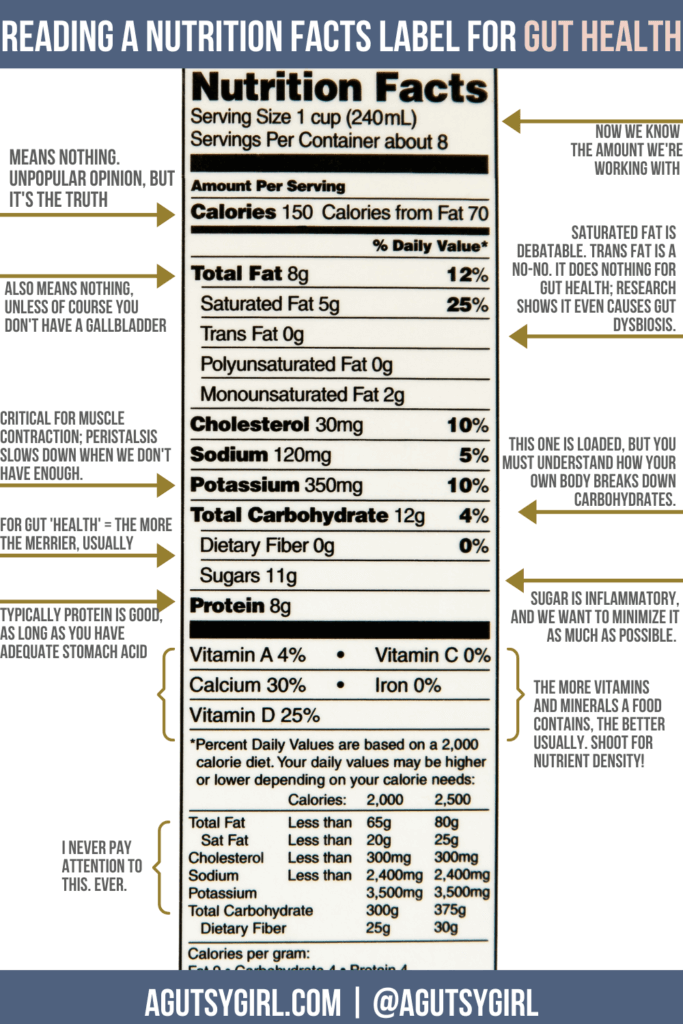
I have no clue what this food is.
I simply want to show you exactly how I read a food label (the nutrition facts portion) for gut health.
Also, a common question is, “Where are the macronutrients located on a nutritional label?”
Here is where you’ll find them. (Macronutrients = carbohydrates, fats, and proteins)
Nutrition Label
Please make note on all thoughts and comments below: I’m strictly talking about gut health and gut healing.
I realize that different medical conditions will require different thoughts and approaches on the nutrition label.
When in doubt, always consult with your doctor and/or nutritionist for help on specific food labeling questions.
1] Serving Size
This may or may not matter. I don’t know your exact situation.
For me personally, it mattered on my journey when SIBO was at its worst.
Why? Because of the FODMAP Diet and quantities of various foods I could “safely” eat.
Grab Reasonable SIBO, which has 310 graphics to help guide you on this one.
2] Calories
From a gut healing and health standpoint, I think calories mean almost nothing.
I obsessively looked at this when I was sick.
I rarely do now (only out of curiosity), and I’m healthy and well.
Trying to eat more calories because you’re losing weight? Well, we aren’t what we eat; we are what we absorb.
You’re likely not absorbing so this likely won’t matter.
Or trying to eat less because you’re fat, bloated, and overweight?
Again, absorption (#1) and you aren’t going to lose weight solely by slashing calories if you need to heal your gut.
3] Total Fat
Unless you have a medical condition that does not process fat appropriately, this is also useless in my opinion.
Fat does contain the most calories per gram at 9 calories per gram, but fat in and of itself doesn’t make us fat.
Ever heard of the Keto diet? I’m personally not a huge fan of it for most women, but the point remains.
If something contains 0g of fat and is packaged, then absolutely check the amount of sugar.
When fat is cut, sugar is usually added.
4] Saturated Fat
Debatable.
I’ve written about this before via Food Questions and Answers [HERE].
I personally don’t go out of my way to eat it, and I likely don’t eat a ton of it.
But also, I eat it without hesitation because I don’t believe the saturated fat “unhealthy” hype.
5] Trans Fat
Avoid this like the plague for gut healing and gut health.
Trans fats include things like shortening and partially hydrogenated oils.
Research backs this up as a gut microbiome disruptor.
Do make note, though: If a product contains 0.5 grams or less trans fats, manufacturers can list it as 0%.
Therefore, you’ll need to return to that ingredient list.
Scan it for terms like “hydrogenated” or “partially hydrogenated” oils.
6] Poly- + Monounsaturated Fats
Monounsaturated fats include things like olive oil, avocados and most nuts.
I try to get a ton of these in my diet.
Polyunsaturated fats include things like corn oil, soybean oil, and seeds.
This one is subjective. For me personally, I just want to know what the polyunsaturated fat is. Having said that, I avoid them.
7] Potassium
If you have any problems with gut motility (i.e. you often feel bloated and constipated, like things just aren’t moving through your system), potassium is a friend.
Potassium is critical for muscle contraction, helping with peristalsis.
If you’re often constipated, you might want to look into this one more.
8] Total Carbohydrate
Every. Single. Person will be different on this one.
This macronutrient is a huge topic for debate and discussion in gut healing and gut health.
I have been on both sides of the coin, so only you can know what this means for you personally.
That said…..
9] Dietary Fiber
For gut health, the more the merrier when it comes to fiber.
BUT, when you’re in the healing phase, you might need to back off some or just be strategic with the type of fibers and how much you’re eating in any given setting.
Check out Soluble vs Insoluble Fiber.
10] Sugars
Fact remains; sugar is inflammatory.
And even still, I’m not vilifying it or telling you to never eat anything packaged with sugar. Not realistic.
I am saying that if you’re serious about healing your gut or maintaining and optimal microbiome, minimize it as often as possible.
Want to read some good stuff on this topic?
Check out, The Case Against Sugar by Gary Taubes.
Fun fact: I want to be the Gary Taubes of the gut health world.
11] Protein
If you’re unsure about the status of your stomach acid, check that first.
You can see my at home stomach acid challenge HERE.
If stomach acid is adequate, digesting protein should be no problem.
12] Misc.
Understanding the percentage of vitamins and minerals contained in the product is helpful and useful.
But total calories based on a 2,000 calorie diet is not.
These 2,000 calories per day are not helpful because it’s just based on an average person.
Same thing with conventional doctors who tell you that your “average blood tests” are fine (when the reality is that they might not be.
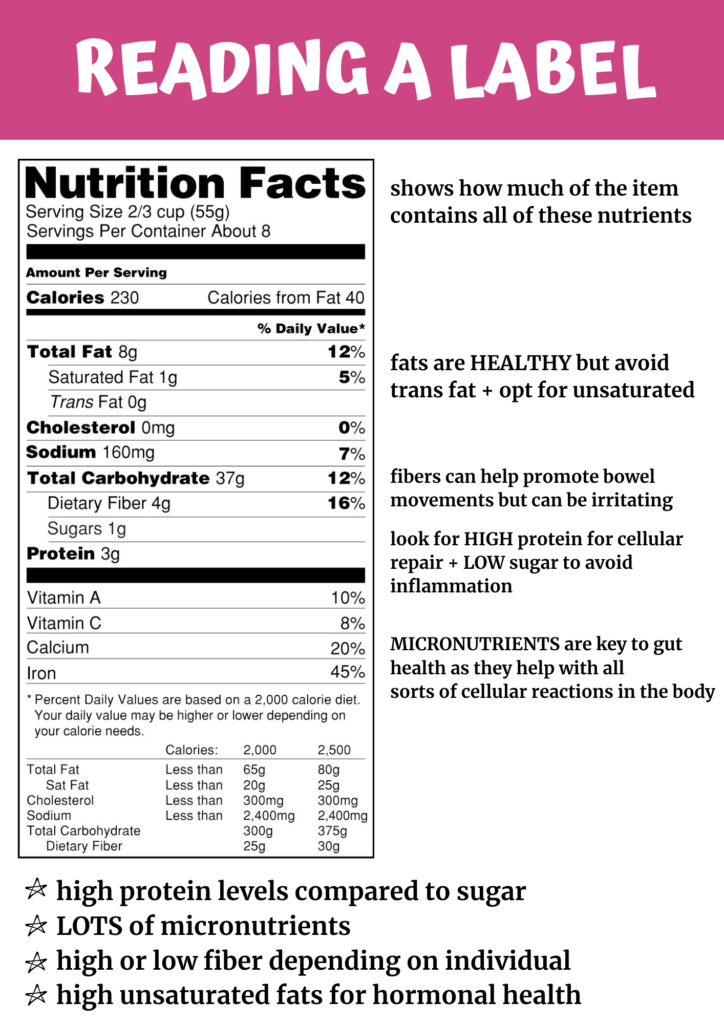

Join Gut Healing: ELEVATED to learn even more about this topic + all the others for your gut healing journey.
Ingredient Lists on a Food Label
Now that we have gone over the nutrition label, let’s take a deeper look into the ingredient label.
I think this is where 90% of your focus should be when grocery shopping and looking at food labels.
Ingredients List
First things first.
When looking at an ingredient label, look at the first 1-3 ingredients. That’s telling. Why?
Because the first ingredients make up the majority of the product.
Ingredients are weighed and then written in the order from heaviest to lightest.
I’m giving you examples of three ingredient labels.
And, I have broken them down by whether or not to choose the product for gut healing and/or gut health.
There is the never buy, maybe buy, and definitely I’d buy.
To be clear, if I say “never,” that just means 90% of the time.
The reason? The more “off-limits” something is for you, the more you want it and the longer it’s going to take to heal the gut.
Never Buy
When an ingredient label overwhelms instantly like this, you might as well just put it back on the shelf.
And to be honest, this is one of the tamer lengthy ingredients lists. Some are double and triple this amount. Just no.
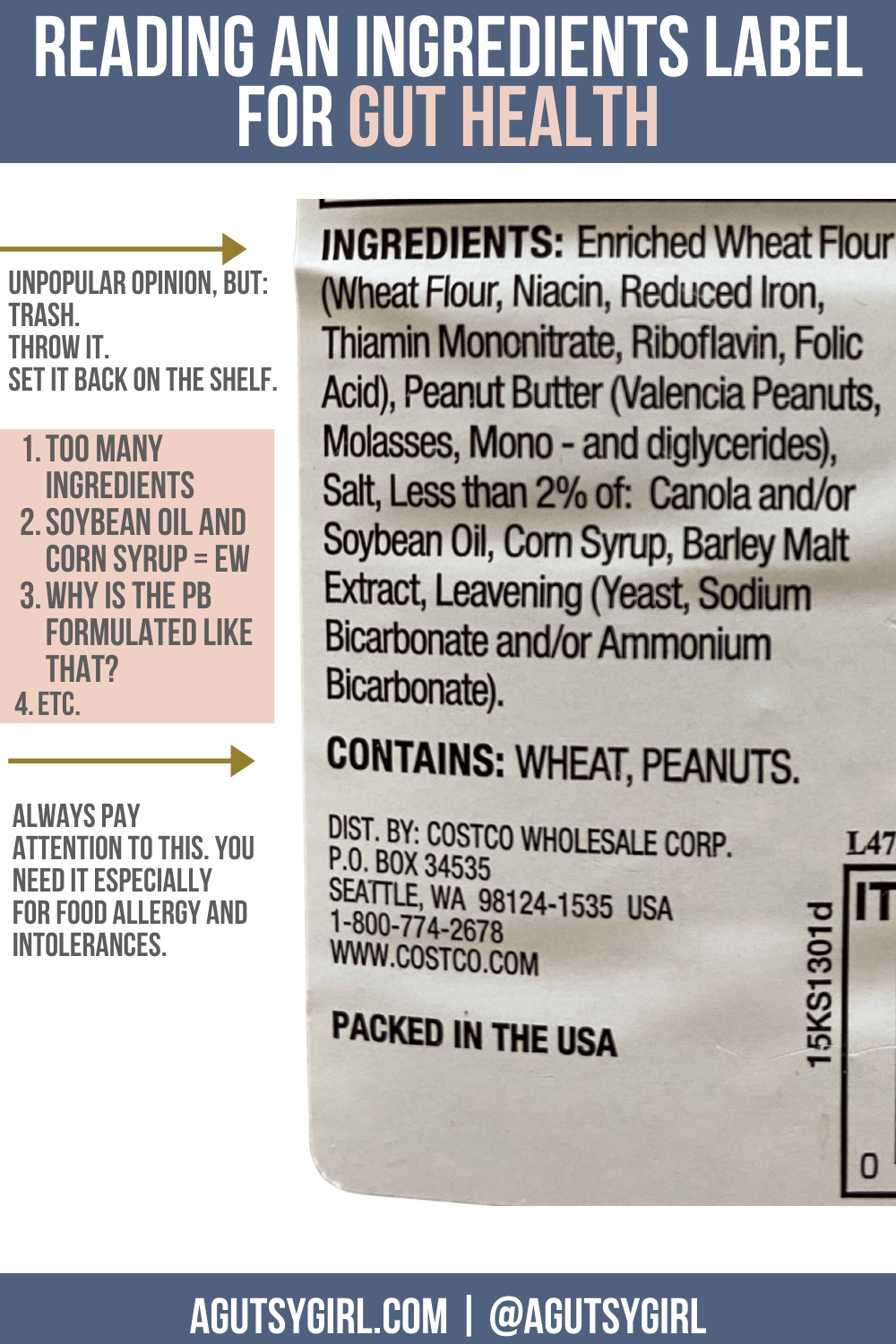
Maybe Buy
When I stumble upon an ingredient list like this, I notice a couple ingredients are in the gray area.
The way I decide in this instance:
- How am I feeling currently? If miserable, then no. If great, then likely.
- What other information can I quickly gather about the questionable ingredients?
- Am I needing to choose this packaged food because I am so hungry? If so, eat it. When in doubt, don’t stress your body like that.
Definitely Buy
Amen.
Four ingredients only.
I’m loving these ingredients!
No questions asked here.

Alright, shall we keep moving on?
Next up are the Marketing terms.
Food Packaging Marketing
There are two critical things for you to know:
- The words are not regulated.
- Rarely do the manufacturers of products who write things like, “Probiotics” and “Digestive Wellness” actually care about those things and/or how it might relate to the Gutsy population. I’m sorry, but it’s true.
They are known as marketing terms for a reason. The verbiage is crafted strategically, then placed strategically on the package to make sure you buy.
Do you really think that a box of Cheez-It are “good for you” because they say “whole grain” and “made from 100% real cheese” on the front of the box?
Because it is marketing, it’s so hard to ignore.
There are some brilliant marketing teams out there.
You have to look past the (fake/altered) photos (I also know this to be true because I was on set for many food photoshoots) and sexy language.
Tricky Food Ingredients
Something else to know about the ingredients label is that there are so many ways for saying an ingredient.
In addition to the idea that something like sugar has over 192 alternative names, some ingredients will trick the Gutsy community.
For example, you might already know that asparagus and chicory root are high-FODMAP, so you don’t consume them often.
But did you know that they are sources of inulin and on some food packaging inulin is the term used?
What makes it even more complicated is that marketers tout inulin as the best thing since sliced bread, but it might not be for you right now.
I get contacted all the time from companies who have a product that uses inulin.
Their pitch?
We think your gut health community will love our product will the extra prebiotics.
But this is not entirely true for everyone in this community.
It’s important that you know and understand the words / alternate words.
And finally, the certification callouts.
Packaged Foods Certifications
I’ve worked in the natural foods industry for years.
And, in fact, I even owned my own natural food company, A Loving Spoon nut butters.
So when it comes to the certifications, I even take those with a grain of salt.
The reason is that they are expensive. As a small food producer, margins are tight.
The only reason you would likely try to obtain fancy certifications is if you’re getting larger distribution (i.e. Whole Foods). And if you’ve hit that point, then margins get super thin.
Regardless, each certification costs a lot of money, and in that industry, pennies are pinched. (Now you can also understand why big companies use so many additives, preservatives, fillers, etc. Pinching pennies.)
So, this is why, when on your gut healing or health journey, you should look at the ingredients list before certifications.
That said, if you have something like Celiac disease, then yes, a “Certified Gluten-Free” label is priceless for you.
HERE is a list of food labels to know.
Understand, Don’t Obsess Over Food Labels
Now that I’ve given you the basics of how to read food labels for gut health, I do need to make something very clear.
The goal of understanding food labels as it relates to your gut healing and health journey is that you feel powerful in yet another way.
When you pick up a packaged food at the grocery store, you won’t feel as much overwhelm.
You now know the main things to look at and what you’re looking for.
Depending on your state of gut health or where you’re at on your journey, you can easily pick out 3-5 things from above that are most important for you.
I’m giving you full permission to never obsess over the fat and calories again, if you’re only concerned about weight.
Don’t get me wrong, weight is important for an overall healthy lifestyle.
But you already have a set weight your body wants to be at.
Heal your gut and it will get there.
Along the way, if you “do wrong” by the gut healing food label Gods, do not sweat it.
I’m not trying to rhyme here, just being completely honest.
The more you obsess; the more you’ll regress.
Questions? Leave them in the comments below.
If you liked this post, you might also enjoy:
- Food Tracking {Health and Wellness Focused}
- Ingredients vs Ingredient(s)
- Why Does My Stomach Hurt {and How to Reset Your Gut}
Xox,
SKH
🤰 bloating be gone! weight loss through optimal gut health for women
💃ʜᴇᴀʟ ʏᴏᴜʀ ɢᴜᴛ. ʜᴇᴀʟ ʏᴏᴜʀ ʟɪfe.
🫶🏻 founder gutbyome.com

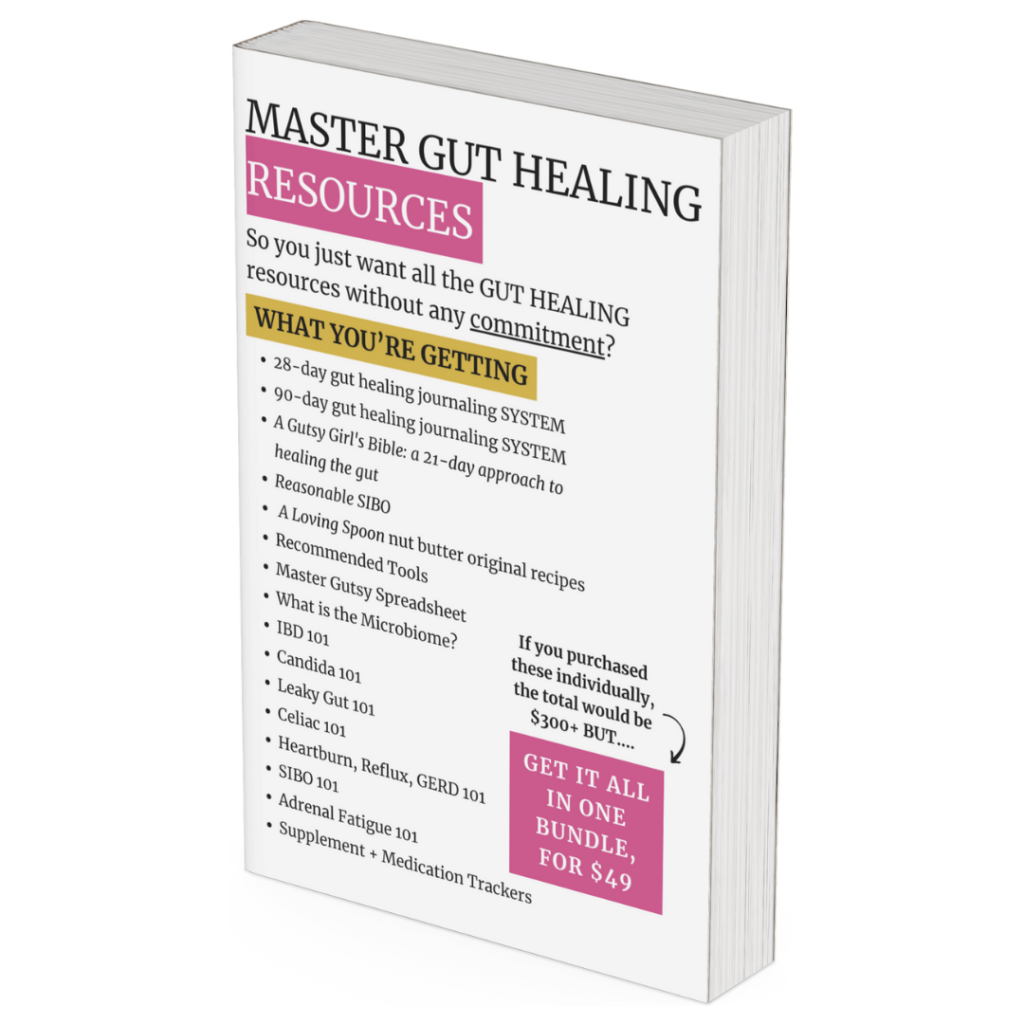
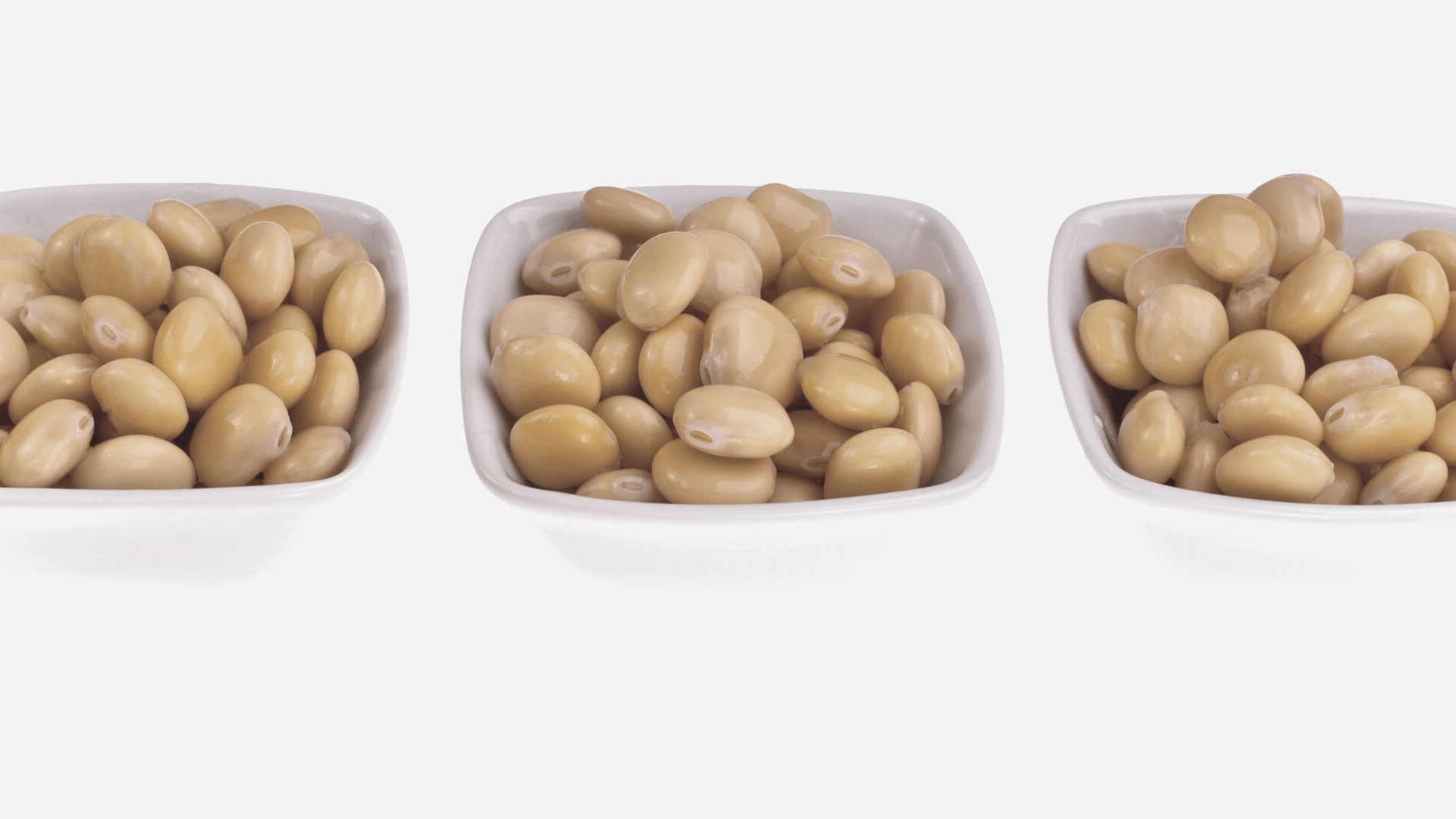
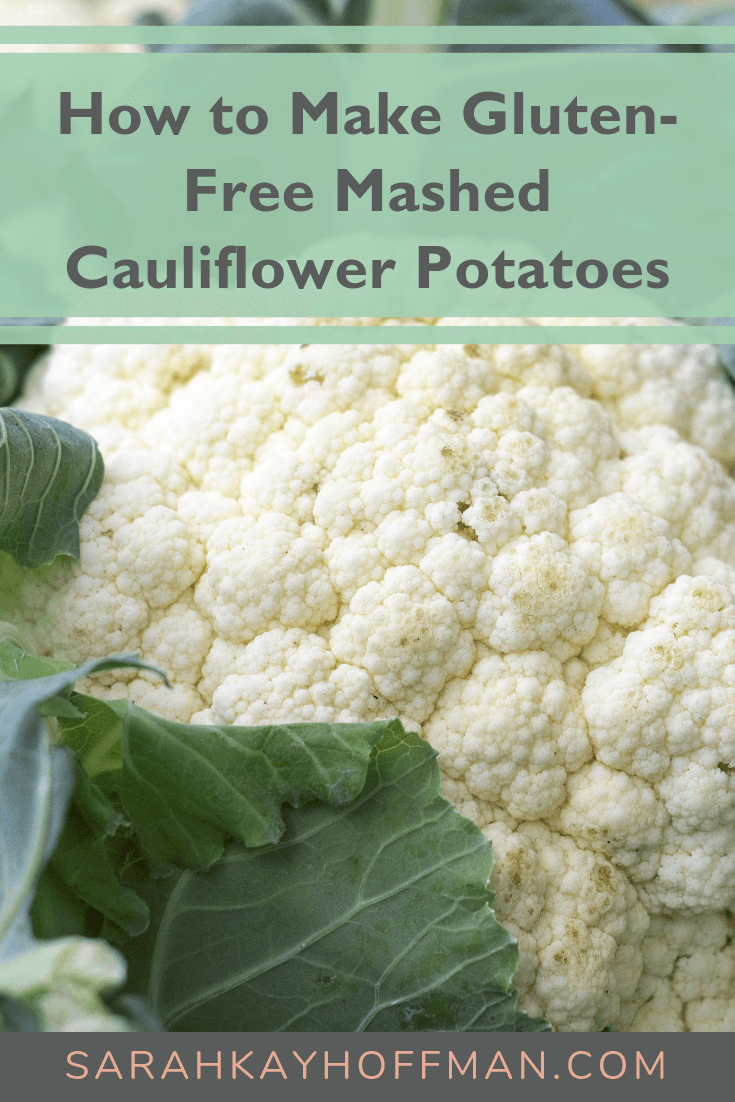


![30 Day Detox [Best Plan in 2025]](https://agutsygirl.com/wp-content/uploads/2020/12/reset-featured-agutsygirl.com_.png)
![The Perfect Loaf [Podcast Episode 10 with Vanessa Kimbell]](https://agutsygirl.com/wp-content/uploads/2021/05/episode-10-podcast-featured-agutsygirl.com_.png)
I’ve definitely become more aware of labels recently. I usually try to make sure I can pronounce/understand what everything is, although that doesn’t necessarily mean all of that is good!
As far as cleaning goes… I hate it. I love a clean house & being organized, but the actual act of cleaning is definitely not my favorite thing!
re. Cleaning the house = me, too!!!
It is amazing what you will find on those labels! It’s key to success for me!
Definitely! Thanks for stopping by, Mindy!